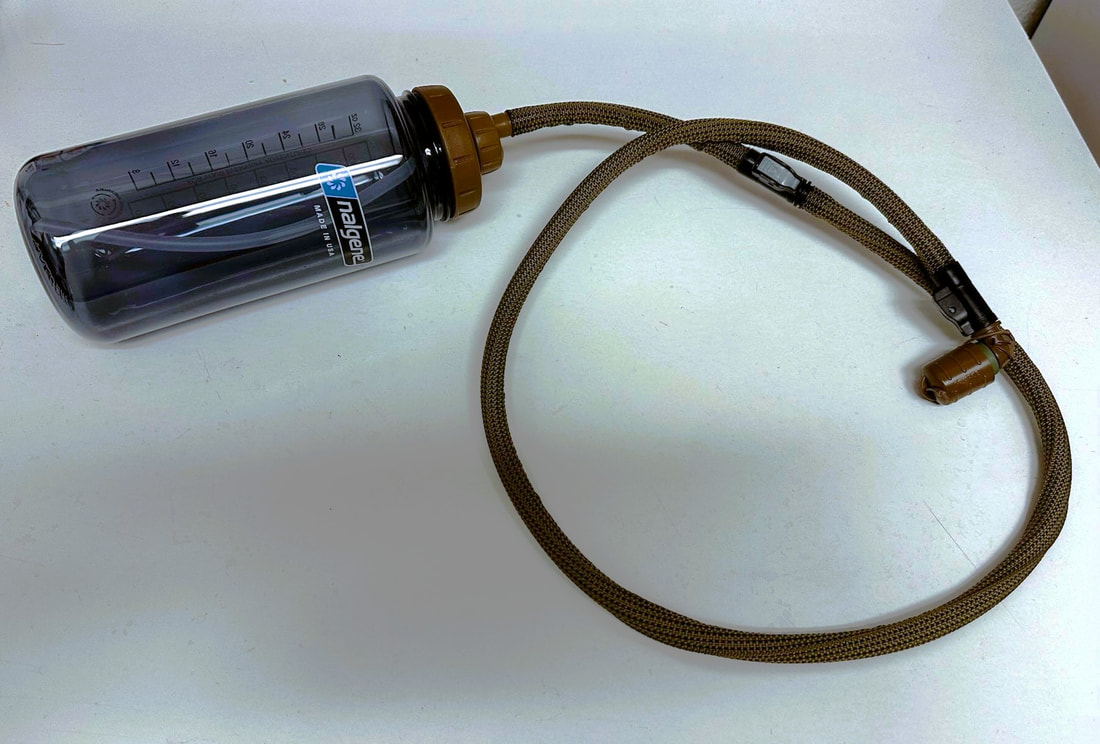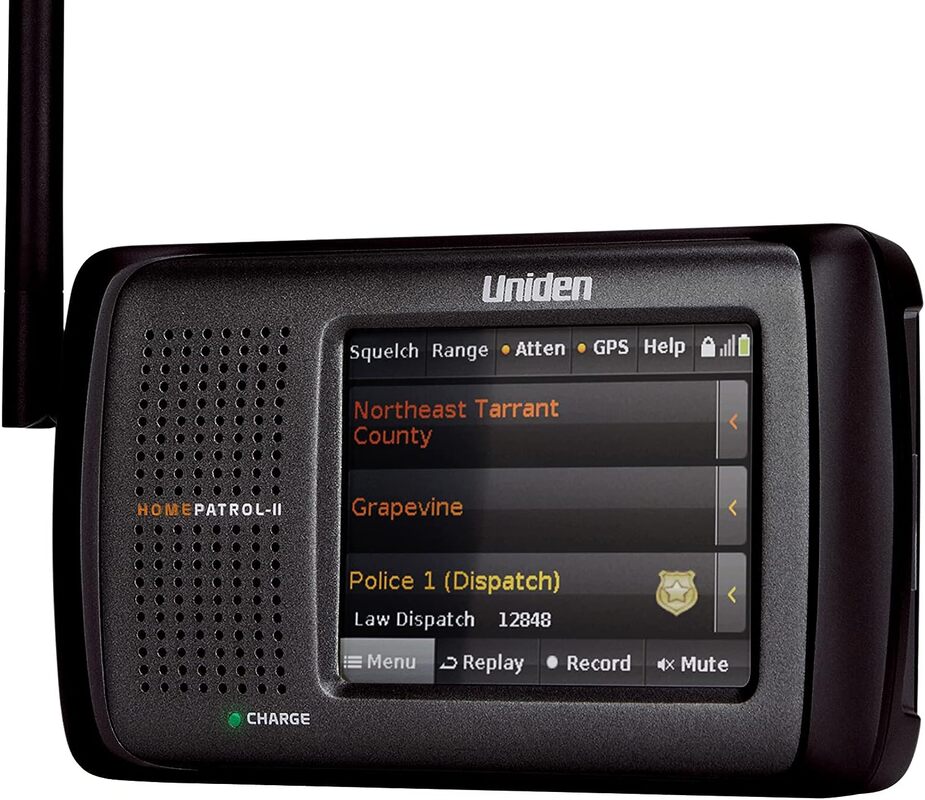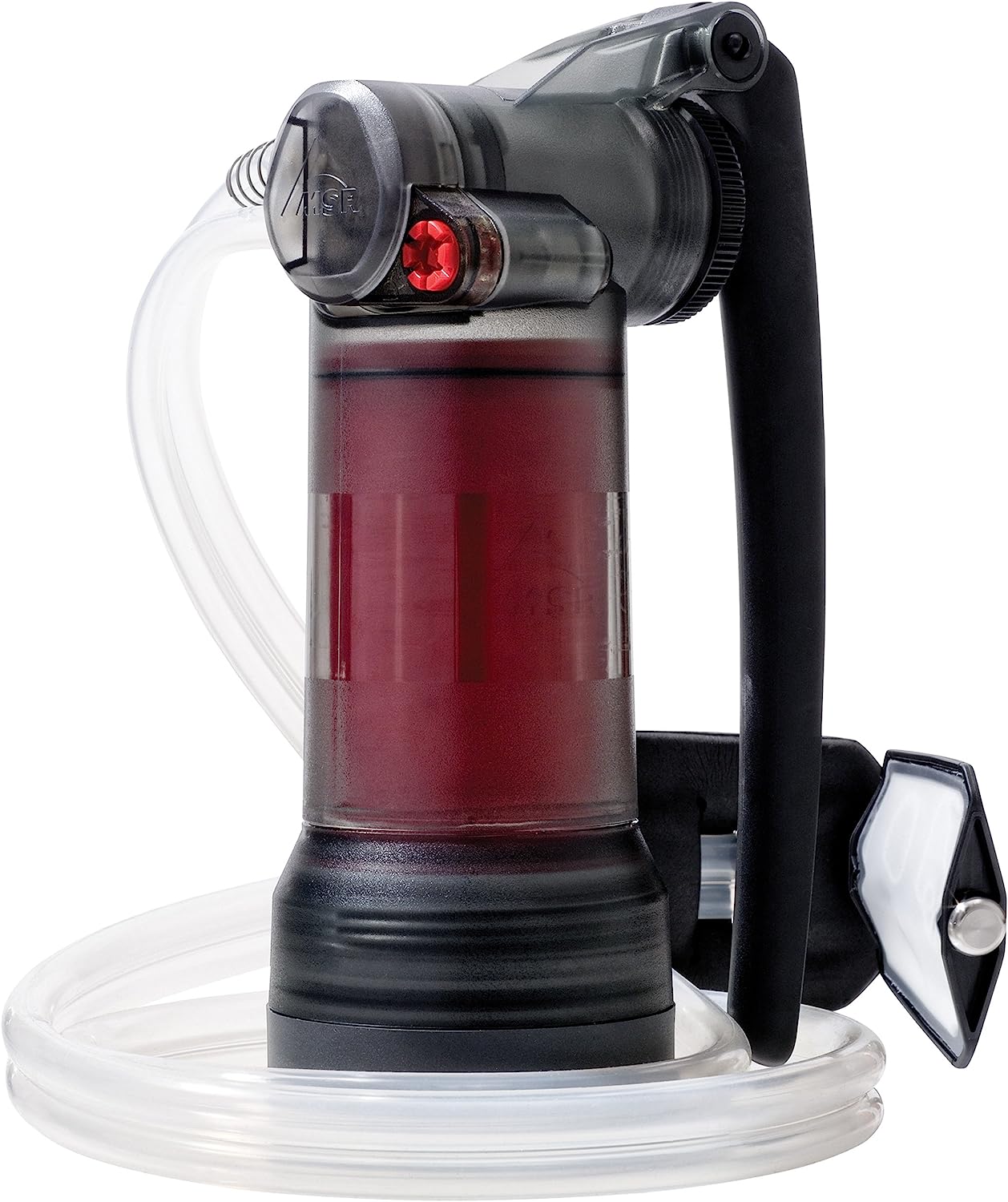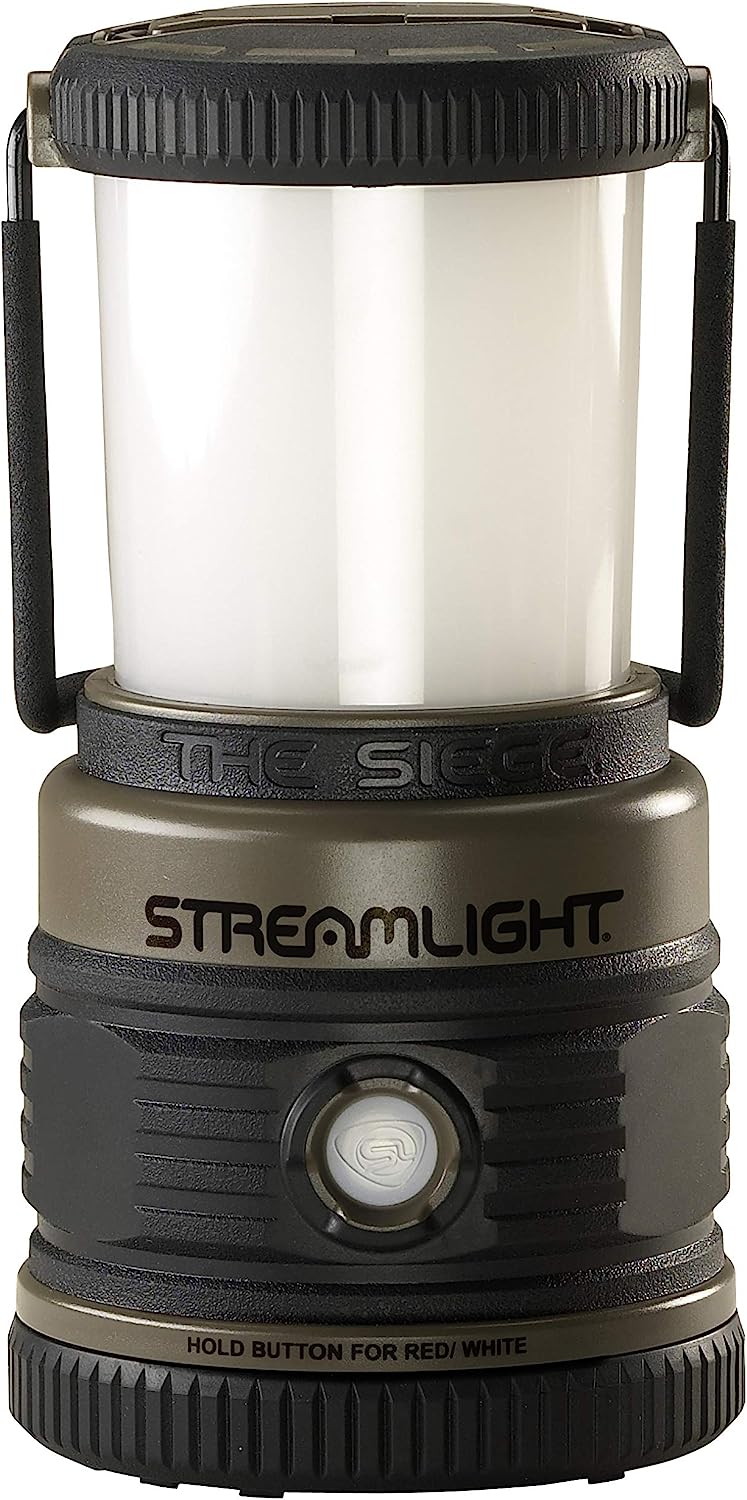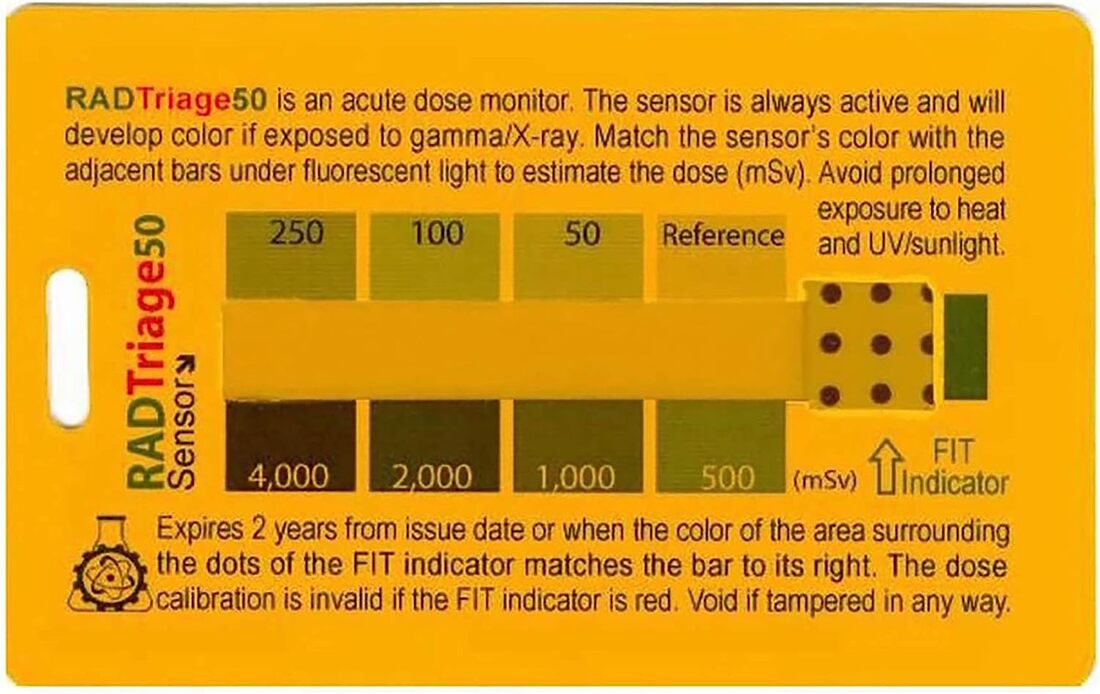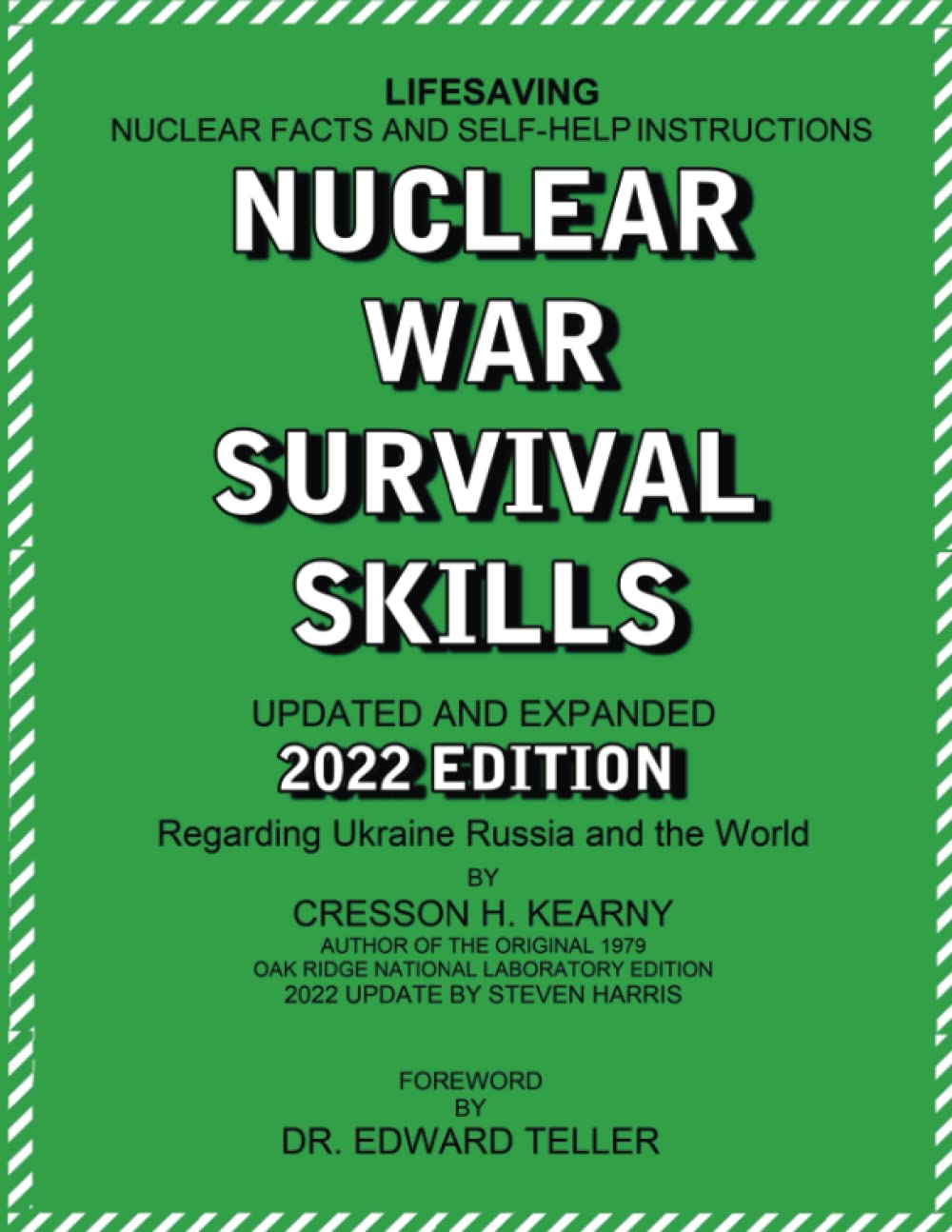|
Leftists: "If Texas can ignore the federal courts and constitution, why can't Hawaii?"
Leftists love to equivocate. It all comes down to false equivocation, which is why cuckservatives are fearful of going all-out and ignoring bad court decisions. If they do it, then the leftist states will cite the the right-wing states' actions, then stick their fingers in their ears and hum to drown out the objections all while they lie to themselves that they're justified, i.e. "two wrongs make a right." But two wrongs don't make a right. Anybody with half a brain knows it, but the Jacobin spirit of leftists allows them to pretend like they have a heavenly mandate because "the other guy did it first." Hawaii is choosing to selectively ignore parts of the Constitution (2A) to subvert a human right it doesn't like. Texas is trying to defend its borders, a duty the federal government has abrogated. Abortion and child transitioning (mutilation) are like religious articles to the left, not fundamentally guaranteed human rights and certainly not something MANDATED by the Constitution. Now the Right needs to understand that the left will play their games and equivocate or dishonestly rationalize their actions. When you're morally right, you don't worry about how your enemy will throw mud back at you. When you're morally right, you go out, do what needs to be done, accomplish what needs to be accomplished, and win. Also defeating your enemy takes care of the BS optics problem. Problem is, the Right is only slowly realizing this too late in the game and there are far too many cuckservatives unwilling to play for keeps. A beautiful book review of Poor Man's Air Force, written even more better [sic] than the book itself, from Third Harmonic on Substack.
Problem: Buildings and terrain block drone telemetry and controller signals so a drone must maintain a radio line-of-sight to their pilot, which limits how they can be operated.
Small unmanned aerial systems (sUAS) such as consumer-grade drones using off-the-shelf technology are limited to line-of-sight (LOS) operations only. While range can be extended by the use of increased transmitter power, higher gain antennas, and use of frequencies better adapted to particularly urban environments, the laws of physics cannot be overcome. Drones cannot be operated behind terrain features or structures without a direct (radio) LOS to their operator. This inhibits the ability to operate sUAS at low-levels in narrow terrain or dense, urban settings. Without airborne control nodes or satellite control that major militaries have, civilian defenders in a domestic conflict, first-responders, or small-scale military users cannot exploit the full possibilities of sUAS capabilities as loss of communication occurs before range/endurance is exhausted. In an urban area, sUAS now have to be flown either no lower than rooftop height or the operator has to get “up” in order for his signal to clear buildings. A SWAT team drone pilot who wants to look into a window on the far side of a building can only see vertically down over the top of the building. He must shift his position, potentially into the line of fire, to the far side if he wants to communicate with the drone as it descends behind the back of the building. Alternatively, a better angle can be obtained by flying at a longer distance and looking obliquely, but this is a compromise. Changing positions constantly is potentially risky in a combat/hostile situation, delays the delivery of timely intelligence, is cumbersome, and can be exhausting. Accepting less-perfect solutions, such as a bad view into a hostage taker’s window, may compromise mission success. Solutions For sUAS, quadcopters and the like are maintained within LOS of the controller. Pilots needing a more distant radio horizon or for their signals to clear an obstruction need to transmit from a high elevation. Legalities aside, a repeater in a high location with a LOS to the desired operating area is technologically feasible. A small, lightweight, modular, end-user customizable remote-operable repeaters and mesh nets that can be quickly deployed to end “dark zones” for non-line-of-sight (NLOS) operation. Properly placed nodes in well-chosen points could create areas of radio reception beyond the LOS of the operator enabling flight in previously radio-blind areas. A tethered UAV could be flown with a node as an airborne repeater as well. These nodes should also be able to communicate together as a network so only one node (“master”) requires a direct LOS to the controller. As long as each node in the network can communicate with either another node or this “master” node, much of the network can be deployed NLOS to the controller. A small military unit expecting combat in an urban area could deploy nodes to strategic points to create areas of radio reception. Law enforcement could deploy notes around the perimeter of a building to enable the pilot to fly completely around a building at low-level from behind cover. Maneuverability would be greatly enhanced in an urban area where drones could be operated out of line-of-sight behind buildings or in narrow “urban canyons.” Militaries could operate from behind cover—i.e., behind a hill, over a ridgeline—and search and rescue units could descend into “blind” territory like canyons. Take for example a military unit assaulting an urban area. Prior to the attack, the unit sends out drones to deposit a master node on a tall building. From there, other nodes are deployed at lower level in strategic areas across the town out of sight of the UAS operator. A network now exists to where the drone can operate throughout the city below the skyline, behind buildings, and down to street level. The SWAT operator from the above example could fly from the safety of the command post and descend the drone directly in front of the window for a clear view in; something that currently would require the pilot to place himself in potential danger. Operational visibility could be enhanced beyond the usual “top down” view that a pilot, say looking into a backyard, only has if he is in front of a house. Search and rescue teams could send a drone out over varied terrain from their command post as well. High altitude or confined valleys and defiles could be searched more rapidly and safely than sending a high angle rescue team. An overwatch UAV at higher altitude, carrying a node as an airborne repeated, visually monitors the low altitude drone while remaining both within the LOS of the “blind” drone and the controller. “How do I either give back to my community through policing or how do I get valuable insight and intelligence on/through local law enforcement.” Easy, volunteer. Understanding how law enforcement agencies actually work can be complex. For an area study, essentially a collection of information to understand where you live, knowing how many cops work in your area is a good think to know. You may also want to know what kind of crime is a problem, if the cops are competent or tyrants, and what is being said on the radio. Much of this can be found out through public records; beat maps (patrol areas) can give you an idea of how the area is divided up per patrol car. Ten codes might be public information in your state. Arrest records might be made public or your newspaper may have a crime blotter. But without a solid foundation to understanding all of this, it is just a collection of indistinct information. You will need to talk to cops and actually see the inside material to understand much of these things intuitively. You can just ask, but understandably it might seem weird or awkward to do and rapport difficult to establish. The two lowest bars after public records searches (often online), are going on ride alongs and taking the citizen’s academy. And if you really want to know or give back, consider volunteering. First, the low bar is a ride along. Sign up and go. You can ask the officer about staffing, if MS13 is a big deal in your area, feel him out with end-of-the-world type questions, and probably even see things like schedules or beat maps to know what the tactical staffing picture looks like. Next up is the citizen’s academy which will teach you more about the department and is intended to field all sorts of questions, but more on that later. Note that you will learn that a lot of cops are normies. Not tyrants, not gangsters, just normies. The cop shop has guys just as lazy and incompetent as your place of employment. Plus, cops don’t all think like guys who shoot IDPA every weekend, are prior service, see a civil war looming, or think the apocalypse is happening. Police need trusted voices that can offer alternative perspectives like I and many of the other American Partisan authors do. Volunteering makes you one of those trusted voices. Civilian volunteers: usually either volunteer office staff or citizen patrol (aka VIPs—Volunteers in Policing or COPs—Citizens on Patrol). Not peace officers. Reserve officers: actual peace officers. Position may be partially paid or fully volunteer. Part-time officers: actual peace officers, scheduled and paid, but not a full-time job. Civilian volunteersVirtually every law enforcement agency of any size will have a citizen volunteer program. These often take two forms, usually either volunteer office staff or citizen patrol (aka VIPs—Volunteers in Policing or COPs—Citizens on Patrol). They are not peace officers. Often derisively known as the “geezer patrol,” these people provide a variety of duties in and outside the station. Volunteers are usually required to go through a citizen’s academy, which is a regular series of presentations put on by the department as a part of public relations. Anyone, whether they intend to volunteer or not, can usually participate and learn how their department works in detail. These usually include things like jail tours, ride alongs, SWAT demonstrations, and discussions about police tactics. It is also a useful insight into crime trends and a way to ask questions without seeming like a weirdo. Volunteering will give you inside access to your law enforcement agency. You will get to know command staff and the individual officers. You will have the chance to participate; even the decrepit old folks who answered phones at the station are appreciated. Most volunteers have actual or incidental access to restricted or even confidential information that will help paint your intelligence picture. To actually give back, field volunteering is great. We had two members in particular that ran our command post and came to nearly every major event, emergency or planned, in the city. Others were advisors for our Explorer program. The real meat of volunteering though is the Citizen Patrol. The Citizen Patrol concept dates back to around the 1970s—in fact one of the cities I worked, Camarillo, has the oldest organized patrol in the country. The original citizen patrol concept was volunteers driving around in their personal vehicles with door magnets and CB radios calling in suspicious activity to the deputies. In a world of cellphones, this is no longer needed, but the help of people who can direct traffic, block traffic, take reports, or even write parking tickets is a huge force multiplier. Duties vary by agency, of course. Not all volunteers are grandparents. So besides giving back through vacation checks, reporting writing, and visibility patrols, what does being on the Citizen Patrol get you? First off, awareness. Citizen Patrol members will likely attend the shift briefing, getting access to the latest crime information. They understand the patrol beats, the rhythm of crime, and how day-to-day policing is actually done. A volunteer who pays attention will get to know the names and places that are problematic, what is serious and what isn’t, and most importantly will learn to understand the radio traffic. I cannot overstress how useful volunteering can be. Want to peruse the disaster manual without getting into a public records fight? You can probably just sit down and read it and the worst thing that will happen is someone thinks you’re an overachieving volunteer. You’ll often have access either directly or though human engineering to all the stuff you want to know. If you’ve ever wanted to ask cops questions like “Would you confiscate guns?”, befriending them as a volunteer is a great way to nonchalantly shoot the breeze. The qualifications are minimal; have a clean background (if you have a CCW, you probably qualify), take the citizen’s academy, and actually participate. Since elderly people do it, the physical qualifications are nil. For more practical applications, your police/fire department may have a CERT/DART program. This is not a volunteer fire fighter position, but usually a disaster response network of people with first aid training and some technical rescue expertise. Our DART members were EMTs who have their own ambulance and often provide first aid at planned events (still waiting on “The Big One” to happen). ReservesReserve officers are volunteers as well, but volunteer peace officers. Unlike full-time officers, reservists generally do not draw a salary and do not work regularly scheduled shifts. Nor are they like volunteer fire fighters where they are paged to a call. Rather, most agencies have a minimum hourly requirement that is fulfilled by a patrol obligation. Exact details vary by state and agency. I’ll use California and my agency, Ventura County Sheriff, as an example. California has a three-tier reserve system in which duties, responsibilities, and powers are segregated by training and experience level. Training is required, usually through a specific reserve academy, but once certified Level 1 reserves have the same powers as a regular deputy. VCSO reserve deputies are Level 1. Not every agency is like this: NYPD auxiliaries are unarmed and have more arrest powers than a regular officer. Nye County, NV, Sheriff auxiliaries are like a citizen patrol on steroids that have light and siren equipped vehicles and are often the first responders on traffic collisions on remote desert highways. As state laws and agency policies vary, readers need to conduct individual research specific to their local area. In VCSO’s case, 16 hour requirement is met usually with a monthly reserve meeting (briefing and training) and 1-2 patrol shifts or staffing an event. Even though the state doesn’t require it, the deputies and must always work with a partner. Many reserve deputies work the minimal patrol shifts but often work special event security. Paid details are occasionally available, such as ballot transportation on Election Day. In my experience, reserve deputies are viewed as a mixed bag. All are technically competent and many have had surprising resumes, from defense contractors and trainers to average joes. Some work the minimum hours and special details only while others will take any patrol shift they have free time for. At one station, I worked with a wealthy finance guy and a contractor who were honorary patrol deputies, in that the regular guys accepted them as part of the shift. Reserves may not have the best opinion among regular officers because of the different training requirements and experience levels. Reserve officers don’t suffer the same hardships of shiftwork, don’t have the same level of experience that policing day after day will give you, and in some cases, the individuals themselves may not be proficient enough to gain respect. While we accepted our reservists warmly, some did have the reputation of not being particularly helpful on patrol. They just didn’t have the same instinct and drive as a regular deputy. That being said, the level of dedication and competence a reserve displays is up to the officer; I worked with some great ones. I haven’t heard of a place where reserves can be mobilized like the National Guard. If you fail to meet your minimum service requirements or don’t respond during a major disaster, if that is required of you, you may be dismissed for being a useless volunteer. Again, though it’s possible to have places where reservists sit around listening to the scanner, you aren’t going to be like a volunteer fire fighter who waits around for an “active shooter” call to jump in your car, throw up your blue light, and don your tactical vest over your jeans. Probably no take-home cars either. Some very small and infrequent jurisdictions may have just sort of a thing, but these are also the kind of places that have two-man police departments that end up on the news for turning the hamlet of Tweakers Corner into a speed trap. Some reserve officers are specialists. Again, this will vary by agency but it is possible to be a retired cop appointed as a reservists. This could fill certain detective, technician, or trainer spots. We had a few reserves who volunteered their time in such roles in addition to meeting their regular requirements. Your skills as a radio tech or a firearms instructor may be valuable to your sheriff or chief. Paid positionsOne option is to become a cop yourself. Some agencies have part-time officer positions where you are paid and scheduled to work as a regular office, just on a part-time basis. Many areas utilize these positions to increase their staffing and plenty of full-time officers used these jobs as a stepping stone to a regular position. For those in non-insane states, I would highly recommend that a younger guy without any special skills or interests consider full-time employment for a time. You could treat it like being in the military (except you can quit whenever you’d like) and leave after 4-10 years or stay for your pension at 20-30. I have known lots of guys who did this and went on to other lucrative careers like IT, contracting, or private security. You will have given back to your community, learned a lot about where you live and the nature of crime, plus made valuable contacts all while getting incredible training opportunities. I would caution you that whether reservists or part-time, the job has to be taken seriously. It’s not a way to just get a badge and a sweet HR 218 (LEOSA) CCW permit. Real cops will see through you if you half-ass the job, so dedicated people only need apply. You don’t want to be the reservist who everyone grumbles about behind his back. If you live in a play-to-pay jurisdiction where you can donate your way to credentials, well, I’d move. Corruption doesn’t breed a successful, free society post-SHTF. Finally, it has to be understood that today’s environment is hostile to policing, from the public’s attitude to federal and local prosecutorial behavior. If you are fortunate to live in a sane state without leftist prosecutors, you are probably at no more risk than cops were at before all the “war on police” shenanigans. Yet do not take the job lightly; your life is at risk, you may take a life, and mistakes or unfortunate events may land you behind bars. ConclusionSo why should you volunteer besides building your intelligence picture or because you have a burning desire to help your fellow man? Primarily because knowing cops and even your sheriff/chief face-to-face helps build rapport and community support. Being a volunteer makes you a known quantity to the local constabulary and will give you advantages in tough times. Information is key, but so are relationships. You want cops to talk to you, maybe give you a “heads up,” or know that you can be waved through the roadblock because you won’t drown if the creek is flooded.
One of the major fears that a lot in this community have is coming across negatively on the police radar or becoming a victim of them. Whether your cops are the type to help the neighborhood ride out the apocalypse or just be another gang, you want to be counted as one of them. Be the person that gets a free pass since you stood out in the cold for them at a roadblock or because they’ve seen you every Tuesday night between six and midnight. You want to be friends with the people who can seize power and possibly have machine guns, so why not spend a few hours a week helping out if all you’re doing is learning names and faces. Getting involved is how you build a community. Yes, sometimes you might have to do real work and for free but think of it as forging relationships and gaining knowledge, rather than earning pay. If you really want to know the inside baseball and ask all the questions that would instantly have you marked down as the local “survivalist” weirdo, try exploring the volunteering options. About the author: Don Shift is a veteran of the Ventura County Sheriff's Office and author of the Suburban Defense/Rural Home Defense series, a cop's guides to surviving riots, civil war, or SHTF.
What a major freeway shutdown protest looks like in real time from the CHP traffic incident log. CHP doesn't archive the comments publicly.
10:29 AM 107 [360] OAK FIRE ADV THEY WERE NOT RESP AND TO ROLL SF [Shared]
10:29 AM 106 [359] GG42 ALCO FIRE PAT TEAM -IN TP PARKING ON STAND BY IF NEEDED [Shared] 10:22 AM 105 [355] TOLL PLAZ STILL CLOSED, SOME VEHICLES ARE USING THE R/S TO PASS SRT. TRAFFIC SLOWLY BLEEDING OFF BRUDGE. MOST GOING WW. [Shared] 10:22 AM 104 [354] NEG TRAFFIC GETTING THRU AT MOMENT [Shared] 10:21 AM 103 [352] [Notification] [CHP]-TMC - ITS MOSTLY TRAFFIC RETURNING WW [Shared] 10:21 AM 102 [351] 96-S1 INQ IF TMC CAN ADV IF TRFC IS NOW GETTING THRU WB ON BAY BRDG - VIS OF MOVEMENT NEAR TP [Shared] 10:18 AM 101 [350] 1039 SF 1141 TO 8TH AT BRYANT [Shared] 10:17 AM 100 [346] LE SF 1141 ADV RAMP CLOSED TO TI THEY WOULD HAVE TO LOOP AROUND AND GO WB AND BE IN THE SAME SITUATION AS OAK FIRE [Shared] 10:15 AM 99 [344] 5L5 SRT MEDICS ARE TAKING OFF THE PATIENT THEY WILL ADV ONCE THEY HAVE A GOOD 1020 TO ROLL 1141 / SF 1141 CPYS [Shared] 10:14 AM 98 [343] A15 1141 IS EB 80 #1 ON LOWER DECK [Shared] 10:13 AM 97 [342] 5L5 CPYS 1023 TRYING TO CONFIRM WHERE TO ROLL SF 1141 [Shared] 10:08 AM 96 [335] 1039 OAK FIRE LINE 332 [Shared] 10:08 AM 95 [333] Secondary Location for A96-058: WB 580 TRANS TO WB 80, [Shared] 10:07 AM 94 [331] 1039 OPD LINE 319,325, 329 [Shared] 10:06 AM 93 [328] 5L5 #4 IN A VAN W/ COOL AIR [Shared] 10:05 AM 92 [326] [Notification] [CHP]-OAK FIRE INQ ENGINE 3 ON THE BRIDGE/ WHERE EXACTLY NEEDED REQ VEH DESC OR PLT [Shared] 10:05 AM 91 [325] 5L5 #4 2 LARGE BUSES 10:04 AM 90 [324] 5L5 NR ON VEH DESCRIPT X2 10:03 AM 89 [318] A96-053 SUBA CAME FROM WB 580 TRANS TO WB 80 10:03 AM 88 [317] A96-098 ANOTHER VEH FAILING TO FOLLOW INSTRUCTIONS - WB 80 AT TP // NOW FOLLOWING INSTRUCTIONS - EXITING RADIO RD 10:01 AM 87 [312] A96-053 VEH JUST BLEW CLOSURE - WB AT TP 9:57 AM 86 [302] 96-P5 MEDIA 97 AT THE BIKE TRLR ENTRANCE - REQ'ING A SUPV [Shared] 9:56 AM 85 [300] PHYSICAL 415'S AT TOP OF BAY BRIDGE - RP CANT GIVE BETTER 1020 [Shared] 9:55 AM 84 [297] 1A54 REMOVING FIRST BATCH OF CARS OFF BRIDGE [Shared] 9:45 AM 83 [292] BC 96 LNS 290/291 [Shared] 9:42 AM 82 [288] AFFIRM WB AT TI OPEN [Shared] 9:42 AM 81 [286] 300-S7 INQ W/ SRT WB JWO TI TO OPEN UP // PER SRT NEG 5 MIN ETA [Shared] 9:41 AM 80 [282] [Notification] [CHP]-ALCO FIRE IS TRYING TO STAGE 1141 FROM OAKLAND SIDE IF NEEDED [Shared] 9:38 AM 79 [275] 96-D7 EB 80 JWO W GRAND - NEAR RADIO RD - BUS DRIVERS LETTING PEDS OUT / AC TRANSIT AND GREYHOUND BUSSES - - PED PATH IS CLOSED SO THEY ARE WALKING ONTO THE FWY [Shared] 9:37 AM 78 [273] 300-S7 WB JWI TI OPEN // BC YBI [Shared] 9:36 AM 77 [272] A96-008 OUT W/ SOME PEDS - EB 80 NEAR RADIO RD - REQ UNIT TO PROVIDE TRANSPORT // RADIO 10-1 [Shared] 9:30 AM 76 [271] 32-S10 TI OPEN // NO TRAFFIC ON TI [Shared] 9:28 AM 75 [270] Secondary Location for 96-S1: W GRAND ONR TO WB 80, [Shared] 9:25 AM 74 [265] 96-S1 CPYS LN 260 [Shared] 9:21 AM 73 [262] 1039 EMVILLE -- REQ CB TO ADV WHEN CAN RE OPEN [Shared] 9:21 AM 72 [261] W/B 80 E/OF TOLL PLAZA TRAFFIC IS GOING WW IN THE LANES [Shared] 9:20 AM 71 [260] [Notification] [CHP]-SUPERVISOR THOMPSON FROM OPD REQ NUMBER FOR SOMEONE ON THE GROUND TO COORDINATE MOVING VEHS [Shared] 9:20 AM 70 [259] GG-C201 REQ EMVL PD TO SHUT DOWN POWELL ONR TO WB 80 [Shared] 9:19 AM 69 [258] A96-008 1125 VEH * [Shared] 9:19 AM 68 [257] A96-008 1125 WB 80 JEO TP - REQ BRDG [Shared] 9:18 AM 67 [256] FIRE IS W/THE PATIENT NOW [Shared] 9:17 AM 66 [253] 19-S1 FIRE OUT W/PT IN #1 // WHI COMPACT [Shared] 9:17 AM 65 [254] [Notification] [CHP]-FIRE ENRT TO WHI TOYT COA WB JEO TI -- SUBJ WAS ADV'D TO TURN HAZARDS ON IFO SPEED LIMIT SIGN - LEFT LANE [Shared] 9:17 AM 64 [252] 96-55T NO VIS OF ANYONE REQ'ING 1141/FIRE FRM W GRAND ONR TO WB 80 [Shared] 9:16 AM 63 [249] 19-R4 OAK FIRE ENRT TO PATIENT UNK 1020 [Shared] 9:14 AM 62 [246] [Notification] [CHP]-FYI, 14 CMS ACTIVATED, W-80, W-580, W-24 N-880, N-880 ONR TO WEST 80 AND N-880 [Shared] 9:13 AM 61 [245] APPROX 15 CARDS NOW GOING WW IN CD and RS [Shared] 9:13 AM 60 [243] TMC COPIES LN 234 [Shared] 9:13 AM 59 [241] BC 96 LN 239 [Shared] 9:12 AM 58 [240] 1039 DOTCC [Shared] 9:11 AM 57 [237] 96-S1 REQ CALTRANS RESP W/ ANY SIGN TRUCKS THEY HAVE AVAIL TO RESP TO ALL CLOSURE POINTS TO WB 80 : WB 80 JWO POWELL // WB 580 TRANS TO WB 80 // NB 880 TRAND TO WB 80 // W GRAND ONR TO WB 80 [Shared] 9:08 AM 56 [234] JEO MAIN CLOSURE [Shared] 9:06 AM 55 [230] 1039 OPD ADV'D LN 220 [Shared] 9:06 AM 54 [228] [Notification] [CHP]-SRT522 JUST REACHED A COUPLE PEDS AT 5TH ST ONR [Shared] 9:05 AM 53 [226] Secondary Location for A96-176: NB 880 TRANS TO WB 80, [Shared] 9:05 AM 52 [225] SRT UNIT ADV HAVING TEAM SWEEP JWO OF THEM TO MAKE SURE NO ONE IS ON THAT SIDE OF THE CLOSURE [Shared] 9:02 AM 51 [218] A96-055T REQ ADTL UNIT TO SHUT DOWN NB 880 TRANS TO WB 80 [Shared] 8:59 AM 50 [211] W/B TRAFFIC IS GOING W/W ON R/S AT THE TOLL PLAZA [Shared] 8:58 AM 49 [204] Secondary Location for A96-055T: W GRAND ONR TO WB 80, [Shared] 8:57 AM 48 [198] Secondary Location for A96-053: WB 580 TRANS TO WB 80, [Shared] 8:57 AM 47 [197] A96-055T W GRAND ONR TO WB 80 SHUT DOWN [Shared] 8:56 AM 46 [186] RP ADVD VEHS IN #1-2 LNS HAVE ALL TURNED AROUND AND WENT WWAY, AND NOW A BOX TK JUST TURNED AROUND [Shared] 8:56 AM 45 [185] 19-R2 ON EAST SIDE O BRIDGE [Shared] 8:55 AM 44 [182] WB JEO CHAIN / 1 W/ GUN [Shared] 8:55 AM 43 [179] FOR LINE 154, APPRX 1/4 MILE JWO METERING LIGHTS, ON THE INCLINE, NEAR SIGN THAT READS EMERGENCY LANE CLOSED [Shared] 8:53 AM 42 [174] RP ADVD VEHS IN EVERY LANES ARE TURNING AROUND, EXCEPT BIG RIGS AND DELIVERY TK'S [Shared] 8:53 AM 41 [170] GG-C201 REQ SIGALERT TO ADV WB 80 BAY BRIDGE IS CLOSED / UNK ETO [Shared] 8:52 AM 40 [165] GG-C201 SHUTTING DOWN ENTRANCE TO WB 80 BAY BRDG / TURNING AT POWELL [Shared] 8:52 AM 39 [163] SRT-L3 EB TRAFFIC STOPPED // ADV TO ACCESS WW FRM TI [Shared] 8:52 AM 38 [162] BC LN 160 96 [Shared] 8:51 AM 37 [160] 19-S1 ALL WW AROUND US // MRE GOING TO SHUT DOWN THE APPR TO BAY BRIDGE [Shared] 8:51 AM 36 [159] BC LN 154 96 - 8 CPYS [Shared] 8:50 AM 35 [154] [Notification] [CHP]-PER ANOTHER CALLER, VEHS ARE TURNING AROUND AND DRIVING THE WWAY IN ALL LANES, RP ADVD EVERYTHING IS SCRABBLED, MC'S AT HIGH SPEEDS SPLITTING LANES 100 MPH [Shared] 8:50 AM 34 [153] A32-081 POSS TO BLK VEHS / RADIO 10-1 [Shared] 8:46 AM 33 [148] 19-R3 WB JEO CHAIN / 100 PTYS GETTING UPSET IN VERBAL 415 [Shared] 8:44 AM 32 [144] [CHP] has closed their incident [231116GG00493] 8:42 AM 31 [138] BC 96 LN 136 [Shared] 8:41 AM 30 [136] WEST OF TOLL PLAZA W/B TRAFFIC IS USING THE CD TO GO WW, NO UNITS AT LOCATION [Shared] 8:37 AM 29 [134] 19-S1 SENDING TRAFFIC WW ??? RADIO 10-1 [Shared] 8:36 AM 28 [129] 19-S1 MEDIA 97 AT TP [Shared] 8:32 AM 27 [125] BC 96 LN 123 [Shared] 8:31 AM 26 [124] [CHP] has closed their incident [231116GG00420] 8:31 AM 25 [123] 19-S1 LOTS OF VEHS FACING WW // WILL TRY BLEED VEHS TO EB SIDE [Shared] 8:30 AM 24 [118] 19-S1 TRAFFIC ALL STOPPED // SEVERAL PTYS OO VEH [Shared] 8:29 AM 23 [115] UNK SRT / MEDIA UP ON BRIDGE [Shared] 8:28 AM 22 [113] 96-P5 WB ** IN THE WB LNS [Shared] 8:28 AM 21 [112] 96-P5 MULTIPLE PRTYS NOW RUNNING WB IN EB LNS [Shared] 8:25 AM 20 [107] BC 96 LN 105 [Shared] 8:23 AM 19 [105] PER ANOTHER PTYS WALKING UP ONTO BRDG BEFORE TP [Shared] 8:22 AM 18 [101] 32-C GETTING OUT OF VEH // ON APEC 93 CHANNEL [Shared] 8:16 AM 17 [98] 32-C START SF UNITS TO ASSIST SRT W/180 // AND REMOVING VEHS [Shared] 8:07 AM 16 [78] SRT-3C2 HAVE ALL CHP UNITS STAY TO THE LEFT SIDE // BREAK DOWN OR #2 KEEP RIGHT SIDE OPEN FOR EMERG VEHS [Shared] 8:05 AM 15 [75] 19-R2 VIS RUNNING BTWN VEHS [Shared] 8:04 AM 14 [70] [Notification] [CHP]-RP ADVD 2 CHP VEHS WB 80 JUST PASSED 4-6 XRAY PROTESTERS THAT ARE HIDING BEHIND VEHS, ALL WEARING YEL SAFETY VESTS [Shared] 7:56 AM 13 [60] 32-S7 6 VEHS BLKGS LNS [Shared] 7:54 AM 12 [57] 32-S7 APPROX 100 PROTESTORS BLKG LNS [Shared] 7:50 AM 11 [44] REQ CAL TRANS W/ TKS / CPYS BRIDGE ENRT [Shared] 7:49 AM 10 [43] BRIDGE CPYS ENRT [Shared] 7:48 AM 9 [39] 24-S10 SQ 7/8 EXT DUE TO TRAFFIC [Shared] 7:48 AM 8 [37] LL BRIDGE [Shared] 7:48 AM 7 [35] VEHS ACROSS LANES REQ 1185'S [Shared] 7:47 AM 6 [34] A32-081 ALL LNS BLKD AT 3RD TOWER [Shared] 7:46 AM 5 [26] 25-E2 PEACEFUL FOR NOW ALL LANES WB BLOCKED [Shared] 7:44 AM 4 [16] 1039 DOTCC, CMS ON [Shared] 7:42 AM 3 [4] PBY ADV ALL LNS ARE BLOCKED [Shared] 7:42 AM 2 [3] ALL LANES ARE BLOCKED [Shared] 7:42 AM 1 [1] RP ADVD 100'S OF PEOPLE JUST BLOCKED THE BAY BRIDGE Did the ATF just make it illegal to sell/buy/possess airsoft smoke grenades (and flashbangs)? It looks like it. At this time, CO2 powered flashbangs still appear to be legal, but anything with pyrotechnics or that burns appears to become questionable.
Smoke grenades are often used in military simulation style airsoft (MILSIM) for gaming purposes to act as an obscurant. They are also used in gender reveal parties or for emergency signaling devices. These “cold burn” devices use a low-temperature (approx. 190°F) to burn chemicals that release colored smoke. Standard Mk18 smoke grenades with a hotter and more dangerous pyrotechnic fuse have already had an iffy legal background and were never commonly available on the open retail market. Flashbang grenades in the airsoft realm are basically firecrackers in a cardboard tube that looks like a real distraction device, but with a much lower dB report that basically creates a loud bang instead of a disorienting pressure wave. Both airsoft smoke and flashbang devices are similar to smoke bombs and firecrackers except no lighter/match is require to ignite them. The ATF quietly posted on its website under “Special Explosive Device Exemptions”: “In November 2023, ATF issued an open letter rescinding special explosive device exemptions for certain consumer-style grenades (e.g. flashbang grenades, smoke grenades).” Digging around locates a letter dated November 2, 2023, that includes a table of previously popular exempted airsoft smoke grenades, including from the popular Enola Gaye brand. Basically, every airsoft smoke grenade has been put on the list. Technically, if you own one of these without a proper ATF license, you are now in violation of federal law. Or at least that’s how I read this. The ATF cites non-specific incidents where certain explosive devices “(e.g., flashbang grenades, smoke grenades)” were used against law enforcement and claims that they have caused wildfires. “Based on these public safety concerns, ATF has determined that these explosive devices pose a risk to public safety and rescinded the SED exemptions.” In other words, because they’ve been used in uncited criminal acts and are dangerous, we can’t have them. "As a result of these rescissions, these explosive devices are no longer exempt from the provisions of the Federal explosives regulations at 27 CFR Part 555. Accordingly, any person engaging in the business of importing, manufacturing, or distributing these devices must obtain the applicable Federal explosives license. In addition, any person acquiring the devices must first obtain a Federal explosives license or permit." [emphasis added] The requirements to obtain a license/permit and store them within explosive regulation guidelines would make it effectively impossible for average citizens (airsofters) to own these devices. Those with these items in their possession may be unknowingly in violation of the law. As of this writing (November 15, 2023), the author has been unable to find any statements from manufacturers or retailers. Some websites still show these popular products in stock and for sale, others out of stock. Be advised that purchasing these after-the-fact may result in the seller being forced to turn over purchaser information to the ATF. At this time, the author has no information regarding legal challenges or comments from ATF, manufacturers, or retailers. Recently, I was asked what I would recommend for someone’s first guns. I immediately said a polymer framed, semi-automatic striker-fired pistol that is neither a full-size “service” pistol or a subcompact “pocket” pistol and an AR-15 style rifle, in that order. Why? Purchasing a pistol first immediately takes care of the self-defense need, which is most pressing. Most self-defense shootings, end of the world or not, will take place at distances where a pistol is perfectly adequate. For novices, pistols can be less intimidating to shoot (perceived recoil issues) and easier to learn. They require less accessorizing and can be stored more easily than a long gun. The AR-15 is the world’s standard of modern semi-automatic rifles. It works as a home defense weapon (better than a shotgun), can be your zombie-apocalypse/civil war gun, and is often used for hunting. HandgunsNote that the term “pistol” includes any handgun, including revolvers or semi-automatics. Why not a full-size “service” pistol or a subcompact “pocket” pistol? Most people who expect to fight for their lives should have a larger pistol that has the capacity for a semi-sustained fight. A larger gun makes it easier to control and reduces felt recoil, which is important for a novice. The last thing a “newbie” should have is a small gun that hurts their hand. That being said, the best gun is the one you will actually shoot and carry, so a smaller gun (a subcompact) like a Glock 43 or Ruger LCP is something you might have on a daily basis when a mugging occurs. Usually, a few shots are enough to end the encounter. So revolvers for daily carry aren’t a bad choice. Unfortunately, learning on these guns might be intimidating due to potentially greater recoil and less controllability because of their size. That’s why I suggest small guns be purchased after a new shooter is comfortable and competent. The biggest issue new shooters seem to have is a gun they can’t manage. Either it’s a Desert Eagle that’s grossly overpowered or a too-small gun they don’t shoot because after five rounds of .357 Magnum their palm stings too much. For this reason, revolvers are poor choices for a first gun. They’re relatively heavy, have lower capacity, are less-intuitive to load quickly, and the triggers aren’t newbie-friendly. Some recommend women and elderly shooters carry revolvers because there is no slide to cock. Well can the shooter manipulate the cylinder and do they have the hand strength to pull a 12lb double-action trigger, or can they reach the hammer to manually cock/de-cock it? There’s no safe hammer-drop lever on a revolver. As for actions, a semi-automatic handgun should be striker fired. These have no external hammer and are cocked when the slide is cycled. They fire when you pull the trigger, so there is no preparation to fire necessary unless the gun comes with a manual thumb safety. Despite often not having external safety switches, these are safe guns that will not fire on their own unless you violate a safety rule. Most have a trigger safety device that will not allow the trigger to move, and thus release the firing pin, unless you deliberately pull the trigger. However, many models have thumb safety variants. Older firearm designs, including revolvers and some semi-auto pistols, are hammer fired. Single action is when the hammer must be cocked before the trigger can fire the gun. Double action means that pulling the trigger also cocks the hammer before firing the gun. Pistols that can do both are often referred to as “DA/SA.” These guns will have a longer, heavier first pull and then subsequent trigger pulls are much lighter. For a novice, this requires learning two different trigger pulls to shoot accurately, which is an unnecessary complication today. So save these kinds of pistols for your second or third gun. A medium-framed gun (a Glock 19 for example) is not too small to hurt to shoot and most shooters can get their hands around the grip easily. It is lighter than it’s full-size brother the G17 and thus is easier to carry and conceal. Larger, heavier guns may be something that women, the elderly, and new shooters struck with, so a medium (sometimes a “compact”) pistol is the best balance between the two. There is a reason the G19 size is so popular. A polymer framed, semi-automatic striker-fired pistol is easier to load and fire than a metal framed gun. They’re also lighter too. A heavy gun that you don’t want to carry due to the weight won’t help you in a dangerous moment. The ideal gun is the gun that you will carry on a regular basis. Lighter and smaller isn’t always better because you may not be in a “belly gun” type fight at a few feet away. You may need greater capacity or the ability to take longer shots. Hence, I recommend staying away from “pocket pistols.” What caliber do I get? 9mm Luger (aka Parabellum). This is an ideal compromise between lightweight, small size, and power. A .45 may give new shooters trouble and is large enough to seriously reduce pistol capacity while making the gun heavy and thick. .40 caliber is an acceptable second to 9mm, but it is outdated and recoil will be sharper. 10mm is quite powerful, where as .380 and anything smaller isn’t powerful enough to be a primary cartridge. 9mm bullets of modern hollow-point design are perfectly adequate for self-defense. In the past, there were concerns that round-nosed bullets wouldn’t stop an assailant, but that is mostly apocryphal. These days, any 9mm defensive cartridge off the shelf will work. Since accuracy (head or chest) is what matters in stopping a threat, even full metal jacket range ammo will work well enough. Again, 9mm is the best balance between efficacy on target, recoil, and weight. Here are my specifications for first handgun: a polymer framed double stack pistol in 9mm. Note that “double stack” refers to a magazine (sometimes erroneously called a “clip”) where the cartridges (“bullets”) are in two staggered columns. This provides greater use of the available volume over a “single stack” where the cartridges are in a single row. Some new guns may use something in between but the key is that the standard magazine should not be less than 10 rounds. Bare minimum specs are:
Here are some examples of handguns in this category (not necessarily an endorsement):
This next category is a hybrid between compact and pocket pistols. These will be a little smaller than the guns above, making them less suitable for being a “sidearm” (hence you won’t see them in a cop’s holster). The smaller size and barrel length will make them less suitable for longer-ranged shots:
The standard (original) Smith and Wesson Shield series is an exception to the 10-round rule. These are physically larger pistols than some of the newest designs like the Sig P365, so capacity is less, but they may be easier for some shooters to grip. The Shield EZ series has been modified for those with weaker hand strength, such as women and the elderly, so that it is easier to cock and fire (using a grip safety). The Sig P365 can have its serialize trigger chassis swapped out at home for the XMacro or XL frames and slides for a larger gun. For sighting systems, the first gun should have traditional “iron” sights, ideally self-illuminating Tritium night sights. Lasers should not be used for aiming, but a rail-mounted flashlight is not a bad addition (though you might want to become a competent shooter before adding one). Avoid “red dot” optic sights on your first handgun. Optics can be added later and most modern designs already have the ability to mount one. Optic sights are great, but learning to shoot for the first time on them alone is a crutch that will cause harm. Learning traditional sights will allow you to use virtually all handguns. Learning basic handgun shooting only with a red dot is like learning to drive only automatic transmissions in the 1950s; there’s gonna be a lot of cars you simply can’t drive. The two sighting systems require different methods of presentation that do not translate over to one another. A red dot is difficult to acquire because the small aperture provides a limited field of view which is exacerbated by the distance from the eye. Without extensive practice, the need for proper alignment every time (from the draw) will result in the shooter subtly moving the pistol around "hunting" for the red dot. Thus, practice drawing and obtaining a correct sight picture requires a lot of repetition for competency. For carrying, purchase two holsters: one suitable for concealed carry and one suitable for open carry. For the latter, you’ll mainly use this one at the range or if the world ends when having a shirt in the way will be a hindrance. Any exposed holster needs positive retention, like a thumb release or a thumb strap. Concealed carry holsters need to be made of a solid, inflexible material that covers the trigger guard so nothing can inadvertently contact the trigger while holstering. Never carry a gun without a holsters (i.e. stuffed behind your belt). Purchase a suitable supply of magazines. You will want to have an extra in a gunfight an a lot more if the world ends. Your gun will come with either two or three in the box, but I would suggest having a minimum six. This will allow spares if you drop one in a fight, it fails, or the world ends, plus you won’t have to stop shooting on the range as often to reload. RiflesFor a long gun, an AR-15 variant is the way to go. They are ergonomic, capable of rapid repeat shots, often more compact than most shotguns, light recoiling, can be budget friendly, and are deadly. The AR-15 is the most common rifle in the US and one of the most produced firearms ever because it is lightweight, reliable, effective, and ergonomic. In fact, the innovations created by designer Eugene Stoner in his AR-10/15 and AR-16/18 series of rifles are what most western modern semi-automatic designs incorporate to form their most basic configuration. The is a reason so many modern rifles imitate Stoner’s designs. Parts are prevalent and their manufacture is so prolific that they can be super cheap. Palmetto State Armory sells rifle packages that can go for about $500 and will completely equip someone with gun, scope, magazines, and ammo. The upper and lower receivers can be easily swapped out and parts accessorized to create more suitable weapons. Capable out to 400 yards, their cartridge will incapacitate man and most deer-sized game. The 5.56mm/.223 bullet is actually less likely to over-penetrate indoors and hit an innocent victim. Recoil is light and the weapon controllable. The controls are easily manipulated with one hand for the most part and the fire selector falls right under the thumb. The ergonomics has been copied or derived from by nearly every modern design. The 5.56mm caliber is NATO standard and similarly sized cartridges have been adopted by China and Russia. They are not unreliable. Reliability issues from Vietnam were due to the Army changing the powder specifications, for which the rifle was not tuned for, and a failure of soldiers to clean their M16s which were billed incorrectly as “self-cleaning.” ARs do not jam up more easily in dusty/muddy conditions than other weapons; in fact, their closed-up design and ejection port cover anecdotally makes them more reliable than other rifles. For a first-time, I don’t recommend assembling your own AR. Buy a complete rifle, both upper and lower. Once you become familiar with it, you can customize it and “build” your own at home. Unless you are an experienced garage gunsmith, don’t take the chance the gun your life may depend on might have an odd failure. Use a factory weapon. Ballistically speaking, for most applications a barrel length 10 inches or longer will be fine, but the AR-15 was designed to work best with a 20-inch barrel and 16 inches is the standard. Federal law (the National Firearms Act or NFA) requires rifle barrels to be 16 inches or more long, otherwise, they are short-barrel rifles that require a special background check and $200 tax. If you want to go this route, fine, but make sure you do this with a second rifle because the wait can be months to over a year for approval. 16 inches is a fine compromise. To get around this, stock-less “pistols” or with ersatz “braces” (which are-but-aren’t legally stocks-it’s complicated) were sold. I recommend avoiding AR “pistols” even with braces due to ongoing litigation challenging an ATF regulation which may make certain configurations illegal. While there is nothing fundamentally wrong with these weapons, for a novice it would be best to steer clear of potentially committing a federal crime. For ammo choice, opinions vary. Test whatever you intend to use for self-defense first to ensure it feeds and fires. M193 55gr 5.56mm is perfectly adequate for self-defense. M855 “green tip” 62gr 5.56 is preferred for some for its armor penetrating capabilities, but it is not a magic cartridge that will slice through armor. Heavier weights like 75gr and 77gr are preferred for self-defense applications. In any case, all of the above ammo will be sufficient to kill. Be sure to buy 500-1000 rounds and half a dozen magazines; the more the better. Be sure to buy a red dot sight if your weapon doesn’t come with one; it make shooting a rifle so much easier than iron sights. Brands may vary, but expect to pay at least $199 for a quality unmagnified optic. Learn to shoot unmagnified before moving to magnified and also note the red dot pistol caveats above do not apply to rifles. Why not shotguns?Shotguns are heavy, often cumbersome, slow to reload, and low-capacity. The recoil of defensive rounds (slugs and buckshot) is often too much for many shooters. The sound of a racking slide does not automatically scare off burglars. They are not point-and-shoot weapons that “you don’t even have to aim.” Do not take Joe Biden’s advice about shooting one up in the air.
While perfectly adequate inside the home, shotguns lack range outdoors, often being effective out to about 60 yards even with slugs. Now with proper sights, slugs, and a good shooter they can reach out to 100-150 yards under perfect conditions, they aren’t terrible, an AR is a better choice. ARs are just as maneuverable indoors as a shotgun but reload faster via a box magazine and have greater capacity. Shotguns can be great, but they are just too much of a compromise in a world where we have better choices available.
Commercially available consumer-grade firework products can be used for contingency self-defense situations in a without rule-of-law (WROL) situation. Use in any of the roles discussed here are at the user’s own risk and are highly discouraged in favor of purpose-made products. Misuse of fireworks can cause death and major injuries and result in serious legal charges.
Employed in an anti-personnel role, fireworks will present a real danger of impact trauma, eye injury, and burns; no one wants to take a Roman candle to the face. While most of the catastrophic firework injuries appear to be from the ignition end, a similar, but lesser potential for such serious injuries to be sustained exist downrange.
Vehicles
Most fireworks will not cause significant damage to an unarmored automobile. The worst external damage that can likely be expected is a broken window from a high-velocity shell fired very close or detonating in, or effectively in, contact with the glass. A vehicle fire from an external impact is possible but less likely. It should be noted that a vehicle with the windows open stands a much higher chance of catching fire should a rocket, shell, or sparks get inside. Fireworks can force a vehicle to “button up,” that is close all doors, windows, and hatches. This makes fighting more difficult from inside a vehicle, especially a consumer auto. Massed fireworks against a vehicle will also obscure visibility. Less disciplined drivers may take evasive action or panic. A firework inside the car will rapidly render it uninhabitable and there is serious risk of it becoming completely engulfed. Types In the evaluation of a firework for offensive/defensive use, ease of employment and effect on target are the main considerations.
Roman Candles
SHTF uses
A well-suited product is a “Gatling Gun” type multiple-launch device that is a cluster of approximately a dozen tubes that look like shoulder-fired rocket pod. Individual Roman candles or smaller bundles can be joined together to make DIY multiple-launchers. This is done by taping a bunch of roman candles together. Handles are added, often out of PVC pipe or wooden dowel extrusions. Single launch Roman candles are preferable to bottle rockets. Traditional bottle rockets don’t fly very far or produce spectacular effects to be useful. They also tend to be shorter ranged and suffer from greater dispersion (inaccuracy) as other fireworks.
Reloadable mortars (aerial shells)
SHTF uses
One major use is horizontal or “lobbed” firing into crowds or formations to disrupt them. Used against civilian mobs and military/law enforcement formations alike, these scenes were very common during the riots of 2020. The noise of the blast, the flash, and the effects (stars) occurring in the middle of a crowd can be incredibly startling. Involuntary effects include seeking cover, flinching/ducking, or even running away. Aerial shells can produce sound levels of between 120 and 150 dB at close range; at the upper end, nearing that of what a flashbang will produce. Disorientation from overpressure outdoors is unlikely. The main effect is chaos induction where the crowd/formation is suddenly startled and therefore disrupted from continuing its behavior or mission, although this result may be short-lived.
Fountains and spinners
SHTF uses:
Fountains will probably work better as incendiaries than a road flare (fuzee) if one is torching something although the flame/sparks will probably be less intense and easier to extinguish. A spinner is more intimidating and difficult to grab than a freshly-lit road flare as the unburnt portion of the flare makes a good handle for throwing. A screeching fountain tossed into a bandit’s vehicle would rapidly fill the vehicle with sparks, smoke, and probably flame as well as making a deafening noise that the cabin would amplify. Fountains might be used to close a specific point, like a small gap, but they aren’t especially dangerous so a daring person might just go through/around them with little risk of serious burns.
Cakes/repeaters
SHTF uses
Mines
SHTF uses
One potential SHTF use could be to lay a mine cake horizontal and use it like a fougasse. A fougasse is an explosive placed into the ground, ideally a slope, intended to detonate laterally to spray the enemy with shrapnel. During the 1850s Crimean War, the Russian army laid these like landmines complete with fuses that detonated when stepped on. Fougasses are used both as traps and to cover areas that are not actively defended. While a proper military fougasse is intended to kill, a firework will not be lethal, but fireworks can be used to blunt an attack/advance through a given area or create a “dead zone.” Firework fougasses could be laid in choke points with trip wires, used to deny or discourage the use of cover, and used to cover the retreat of a defender. 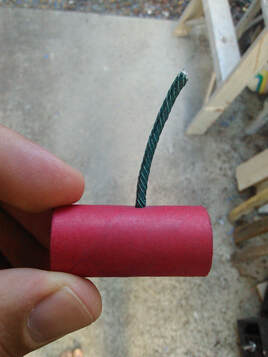
Firecrackers
Potential SHTF uses
Note that M-80s and cherry bombs, technically known as “salutes,” are illegal and banned. They are not sold commercially and generally illegal to manufacture as explosives under federal law as they exceed the amount of powder permitted for consumer fireworks. Only 50mg of flash powder is permitted for legitimate safety reasons. M-80s were originally intended to simulate artillery fire and contained five grams of flash powder, or 80 grains. Military-grade flashbangs have approximately 5 grams of powder by comparison. Firecrackers may be employed as a distraction device, an ersatz flashbang. Airsoft and consumer-grade devices cannot produce the physiological disorienting effects that a true flashbang or illegal firecracker will. Consumer firecrackers and airsoft devices should startle someone and they may confuse it for an actual explosive.
Roles
Suppression Ideally suppressing fire is lethal so it disables the enemy from ever attempting to harm you again. When it comes to suppressing fire; no one wants to take a firework to the face. Low latency is preferable for defensive/suppressive use. A high rate of fire, i.e. the firework is firing constantly with no more than a 1-2 second delay, seems to be ideal. The goal is to have a fairly tight column of fire impacting the area to be suppressed. This can be a vehicle, a fighting position, or a small cluster of people. Psychological harassment In siege situation, the sound of screeching rockets and booms can be particularly mentally taxing. There is a known psychological effect of whistles; for example, like incoming artillery or the Jericho trumpet on a Stuka. Salutes and whistle rockets that scream before detonation would be ideal for this purpose. The actual danger for fireworks alone is more psychological than physical and can be a good way to wear someone down. Area denial In Rhodesia, it was not uncommon for farmers to place Dynamite or other explosive charges in positions that seemingly would have made ideal cover or concealment for terrorists. When an assailant took up that position, the charge would either be command detonated or the terrorist would trigger a boobytrap. While a firework is not likely lethal, the attacker would have to immediately evacuate the position, potentially exposing himself. The position is then unusable while the firework is discharging and the effects alert any defenders to the location of the attacker. Signaling and warning Fireworks were used in military contexts primarily for signaling especially at night. Different types, such as rockets and flares, were employed to convey messages. Colored rockets can indicate different signals, such as colored flares can. Setting fireworks with remote ignitors can be used in traps to warn of an enemy approach. For example, imagine a gate on the perimeter of a ranch that when opened lights off a screeching fountain. The defenders are alerted to not only the intrusion, but the location (visual effects) and the enemy knows the element of surprise is lost. Problems Noise and excessive sparking before launching are a liability that may give away the launcher or launch point. Firework launch signatures are almost always smokey and involve flame/sparks. This will give away your position if not behind a visual obstruction. Fireworks must be deployed along with legitimate covering/suppressing fire or overwatch. Almost all fireworks require a flame-lit fuse which will require the user to have lights or matches. Open flames present a fire hazard and any source of flame in dark conditions may invite gunfire. It is possible to make friction ignition pull devices using cardboard, tape, and ordinary matches. Electric ignitors do exist and are available, although for non-ATF licensed individuals they require a bit of DIY’ing. The average person who gets a Baofeng radio will have no idea how to tune in when they turn it on and see an input like 445.000 staring back at them. Pushing the buttons to blindly tune the frequencies up or down doesn’t work like a CB radio, car stereo, or marine radio. You can’t just pick a frequency at random and start using it. First, there will probably be no one to talk to. Second, you could be transmitting on a frequency or in a mode that is prohibited. My pre-ham radio experience was with VHF law enforcement radios; my agency has 16 channels programmed in on the main ‘A’ bank. For public safety/business use, the FCC assigns frequencies. Not in the ham world. Ham radio does not have defined voice channels like Marine radio, CB, or GMRS/FRS. The concept of saying “Go to channel __” doesn’t exist. What exists on the ham bands are portions of the frequency spectrum that is generally understood to be used for simplex (radio-to-radio) voice communication. Imagine it as a freeway without any marked lanes. To better navigate that lane-less freeway, radio users have decided to separate portions of each band and dedicate them to specific uses. Simplex, or radio-to-radio voice, is just a small part of that. In order for the various uses of the ham bands to all get along, local radio coordinators outline what ranges and frequencies should be used for what. These coordinators are unofficial bodies and the plans aren’t legally mandatory, but they are mostly obeyed to avoid chaos, the same way people obey traffic signals when a cop isn’t around. You can create “lanes” for your own channel plan as long as you play by the rules that everyone else does. This is really no more than agreeing on specific frequencies to use and giving them a name or alpha-numeric designation. Having a channel name or number is for brevity and communication security. “Go to five,” is shorter and more secure than saying “Go to 158.730.” So, within your own group/family, you can know that “VHF channel 1” means 146.415 MHz. Again, this is an in-group thing because there are no public ham channel allocations. How to get startedMy semi-facetious suggestion is become friends with a likeminded, experienced ham and let him provide you with his pre-existing plan. I kid, but there are hams in your community that have already done this and will have saved you a bunch of trouble. Connections can and do pay off. But for the rest of you… Start by finding the basic band plan[1] for the band you plan to use; in our case it will be 70cm or 420-450 MHz UHF. Note that 420-450 MHz is the basic frequency range for that band; it will be divided up into different groups for various uses, such as Morse code (CW), television, etc. Be sure to review the band plan for frequencies that are reserved for specific uses, such as digital packet transmission only, often noted “no voice.” Note the bandwidth spacing for each band. For 70cm, this is 25 kHz while in some parts of California it is 20 kHz. For 2m VHF, this is 15-20 kHz. Think of spacing as a separation lane to keep the radio traffic from bleeding into each other. Too narrow of spacing and the radio signals start interfering with each other. Using the no-lane freeway above, technically speaking is the bandwidth separation. As long as the traffic is within the limits of the range and far enough apart from each other, who talks on what frequency is unregulated. You can simply plug in a frequency in the right range, check that the bandwidth is set properly (the radio should do this automatically), and start talking. Shy of SHTF or an emergency this can be a nuisance. Practically speaking, you need to mind the upper and lower end of the frequencies for both the FCC-defined band and the range for simplex voice. Orderly ham radio depends on everyone coloring (or parking or driving, whatever analogy you prefer) within the lines. One can’t reasonably just start yakking away on any frequency for this reason. This problem with choosing a frequency at random is you may be talking slightly off a locally defined channel and interfering with that traffic. That’s a quick way to make other hams unhappy, sort of like making the other guy pull off a one-way road so you don’t have to get your car’s passenger side all muddy by driving on the shoulder. What needs to be done is see if there are any local channel plans for the band you intend to use. Locate your state or regional band plan. These are gentlemen’s agreements by local ham organizations to allocate the different frequency ranges for various purposes to better regulate and coordinate traffic. Many organizations do not coordinate simplex frequencies. In this case, generic spacing and allocations can be used. You will need to Google “[state or region] ham radio band plan” to find this information. Alternatively, you can ask a local ham club. In the 70cm UHF band, you will want to check your local band plan (down to the county, if there is such an organization) and the repeaters carefully before deciding on using a certain frequency. For example, you may want to start at 445.000 and go up to 446.975 at 25 kHz channel spacing intervals. At each interval you would check that the band plan doesn't reserve the frequency for something like high-speed packet transmission or that it's assigned to a repeater. Note that you don't want to break the pattern of intervals because your signal will bleed over to other frequencies and cause interference with other traffic. That's rude, like parking in two spaces. It's going to make people mad and if you have a problem that comes to the FCC's attention you will be the at-fault party. So once more, random frequency selection is suboptimal. Check your local repeaters to ensure that you are not talking on a repeater input/output frequency. Repeaterbook.com is the most popular resource for repeater information. This becomes more of a concern in 70cm UHF because the simplex (voice) range is shared with repeaters. For instance, in Missouri 445.900–445.975 is shared between simplex and packet traffic; at 25 kHz spacing that leaves four voice UHF channels that can be used. Don’t forget to actually listen to the frequency for a while to determine what kind of traffic is used on it. Finally, remember that the airwaves are all shared and open to the public. There is no privacy or reserving of frequencies. All FCC regulations will apply. Your channels are nothing more than a memory device for certain frequencies and will be specific to your group only. Any outsiders you are communicating with will need to be given the actual frequency to tune to, not your channel number/name.
Repeaters You may want to put repeaters in your channel plan. For instance, my group notes these with an R (Romeo) for repeater, as “31R.” Again, the repeaters are public but saying 31R is easier and more discreet than saying “McClellan Peak UHF” or “W7RHC.” Some notes about programming repeaters in: For repeaters, the input (receiving) frequency is published. This is the frequency that your radio will talk to the repeater on. You will need to program in an offset so the radio knows what frequency to listen for the output signal (that the repeater is re-transmitting the traffic on). Note the offset for your band; this varies. 70cm uses a 5 MHz + or – above or below the repeater input frequency. 2m VHF is 600 kHz or .6 MHz. Most radios will automatically set the offset frequency once you note + or – in the software so you don’t need to manually enter the offset frequency. Most repeaters will use a PL tone to activate the repeater. The offset and PL tone will vary on each repeater. Common simplex voice frequencies 2 Meters (144-148 MHz) 146.400-146.580 simplex 146.520 National simplex calling Frequency 147.420-147.570 simplex 70cm (420-450 MHz) 445.000-447.000 simplex (shared with repeaters and other services) 446.000 National simplex calling Frequency Example 2m simplex channels (SoCal) 144.310-144.375 (15-20 kHz apart) 144.405-144.490 (15-20 kHz apart) 145.510, 145.645, 145.525, 145.660, 145.540, 146.445, 145.555, 146.520 (calling freq.) 145.570, 146.535, 145.585, 146.550, 145.600, 146.580,145.615, 146.595, 145.630 147.510 https://www.tasma.org/TASMA-2m-Band-Plan.pdf Note that the 70cm UHF equivalent of above is extremely uncommon. [1] https://www.arrl.org/band-plan Sample band plan This simple band plan is taken from Los Angeles area information. It includes a Channel of the Day (COD) so each group member knows where to go each day to listen and make contact if necessary. While a real plan would have the frequency order switched up, changing the “main” frequency each day will inhibit any easy monitoring by bad guys. Note that the days must rotate because there are not enough frequencies for a 31-day month. Channels of the Day will need to repeat, and more often on bands with lesser available simplex frequencies, especially on UHF. Repeaters that are intended to be used are included as well. This method will work for 2m/1.25m/70cm and GMRS/FRS. A similar plan can be made up for CB with the ordinary channel numbers switched up. The duress channel is an unused frequency that can be switched to if your transmissions are being monitored by bad guys. The code word can be spoke and everyone will know to switch without further prompting. Credit to [redacted] for coming up with my group’s plan, from which I modeled this example chart (because the public isn’t seeing our actual one). Note: this is an excerpt from my book Basic SHTF Radio: A cop's brief guide for understanding simple solutions for SHTF radio communication, available on Amazon. Also consider NC Scout's "The Guerilla's Guide to the Baofeng Radio" (which I consider to be "Intermediate SHTF Radio."
Why Sub-250 gram drones? Federal law defines sub-250 gram unmanned aircraft as “micro” drones. These Group 1 micro-UAVs do not require registration in the US or most countries. They range from toys, to hobbyists’ racing drones, to a novice cinematographer’s flying camera. Top-of-the-line micro-UAVs could make a helpful adjunct to a mobile unit. For small units, these make ideal “periscopes” to see over terrain or scout areas remotely. While a larger, high endurance and longer-range drone is of course better, they are much larger packages. Sub-250 gram UAVs are smaller, lighter, and faster to deploy than larger models. A very small drone can be easily carried along and used to augment the patrol where a larger drone providing overwatch is not available or to clear or recon areas in lieu of sending in a man. Heavier drones being man-packed will slow a patrol down, will take longer to launch and recover, and will hinder mobility if attacked. Now why sub-250 gram drones exactly, you may be wondering? Surely heavier ones are better, especially if I’m not planning on man-packing the thing into combat. Let me quote the FCC:
What still applies?
Realistically, unless your drone crashes and injuries someone or the police show up, flying over structures or people with respectable clearance isn't going to cause problems. While you must stay below 400 feet Above Ground Level (AGL), unless you're near and airport or hit a plane isn't not like anyone is really going to know. As far as drone detectors, these will be present near major airports, military bases, and special events, like Joe Biden’s vacation or a major sporting event. While sub-250 gram drones aren’t broadcasting RID, their unique signals in the Wi-Fi (2.4/5 GHz) band are discoverable by specialized and sensitive detectors. If you fly a drone in a remote part of National Park or something, odds no one will ever know. Buying Guide to Sub-250 gram drones Here are the top four sub-250 gram drones, all available between $750 and $140 (depending on the price when you buy). DJI Mini 3 Pro Best performance, second best camera, but has all the DJI nerfing and China drawbacks. Autel Evo Nano Plus Like the DJI Mini series but with slightly decreased performance but none of the DJI Chinese baggage. DJI Mini SE Cheapest DJI model. Holy Stone HS710 Cheapest, quality model. Perfect for beginners or “stacking” multiples of. DJI Mini 3 Pro DJI is the biggest name in drones, but it comes with a caveat that it has been “nerfed” and is probably a Chinese spy device. Overall, it has the second Best camera and the best performance. Negatives are it is Chinese and omes with geo-fencing problems native to all DJIs, which isn’t why you buy sub-250 gram drones. It’s also relatively expensive than other drones in its class.
Autel EVO Nano Plus This has the best camera, up to 8K resolution. It also does not have the baggage that DJI does. At the price point, it is the most comparable to the DJI Mini with similar endurance.
DJI Mini SE This is the cheapest drone so far produced by DJI. However, it only has a "2k" camera so it lacking the advanced camera features or higher quality resolution might be problematic if you want coo video. It also has the negatives of DJI geofencing and probably feeding data back to China.
Holy Stone HS710
This is the cheapest non-toy option (I got it for $139 at the time) that is ideal for beginners and nearly disposable use. Consider these the Baofeng radios of the micro-UAV level. They are small, light, and can be easily carried by an individual. It has a 4K camera and more advanced camera/flight features that the cheaper DJI options don't have like altitude hold and “follow me” (if you’re into cinematographic video).
|
Author Don ShiftDon Shift is a veteran of the Ventura County Sheriff's Office and avid fan of post-apocalyptic literature and film who has pushed a black and white for a mile or two. He is a student of disasters, history, and current events. Archives
May 2024
Categories
All
As an Amazon Associate I earn from qualifying purchases.
|
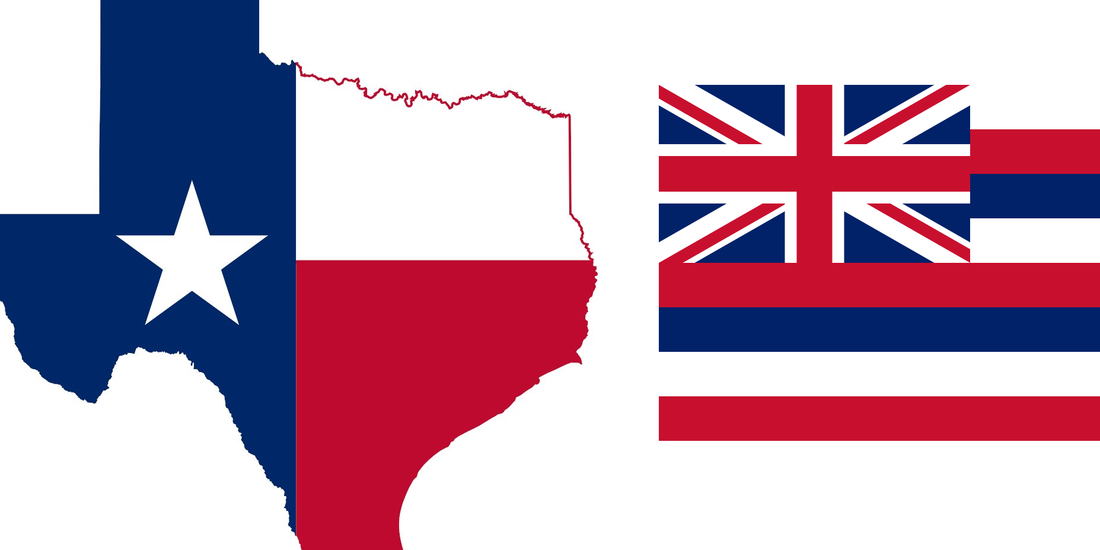
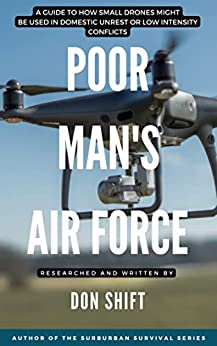
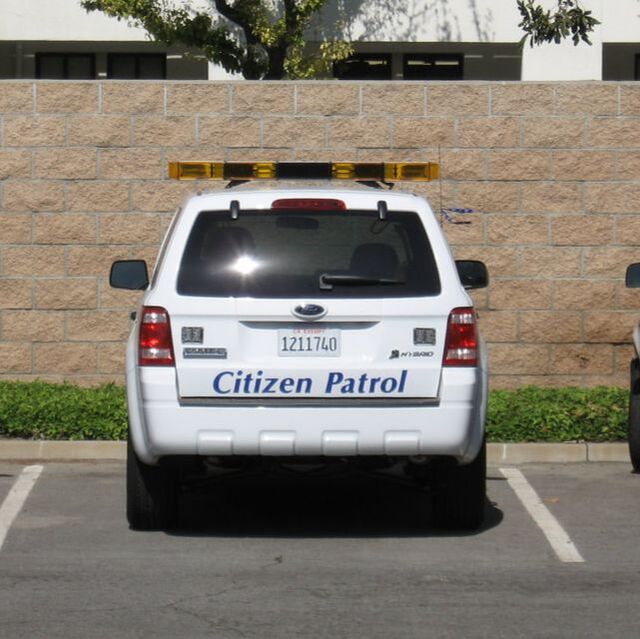
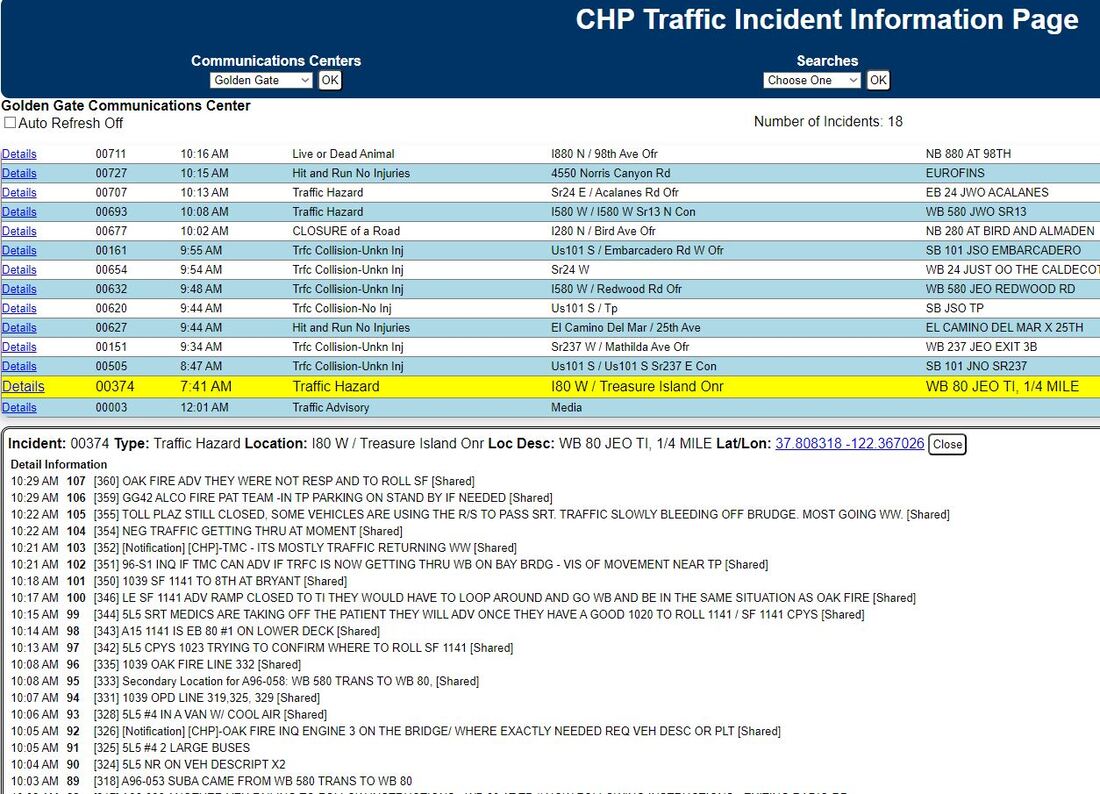
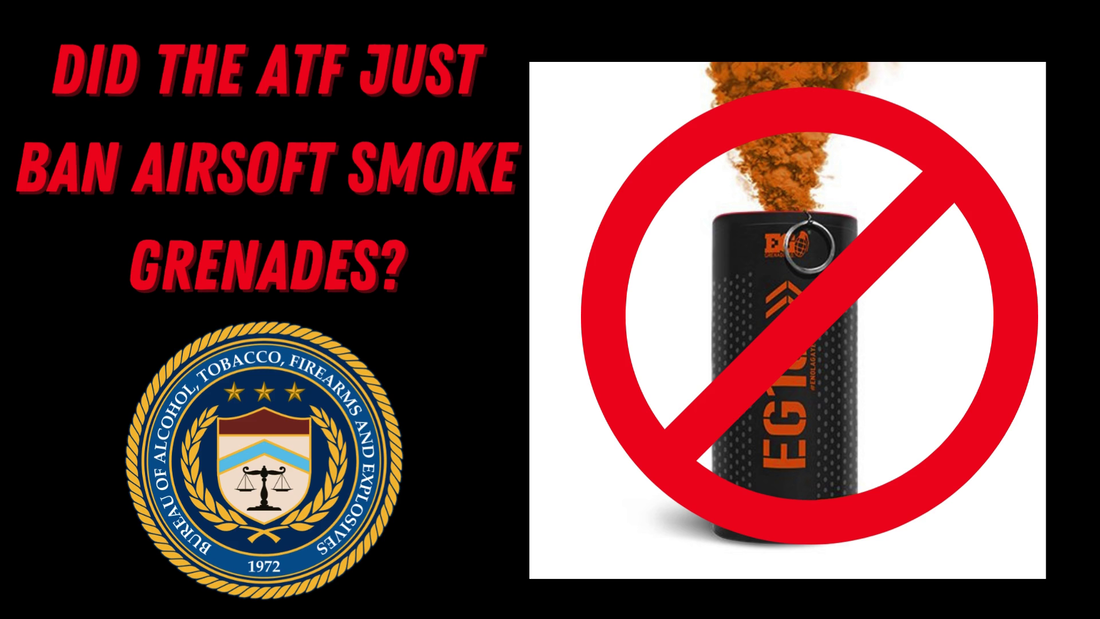

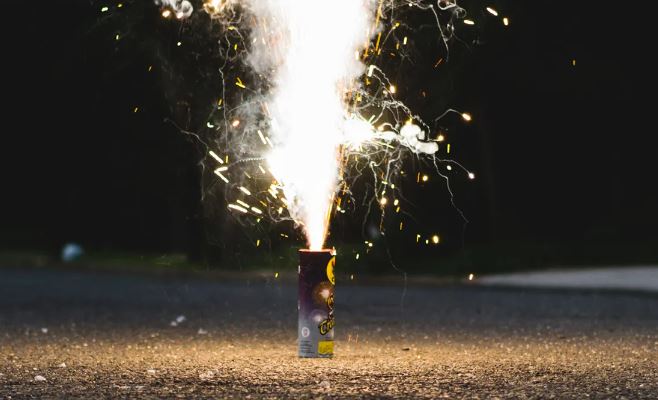
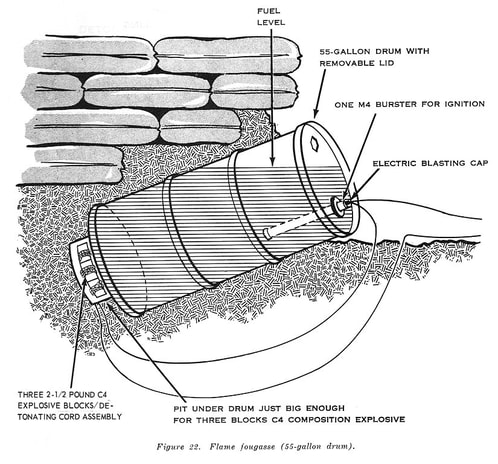
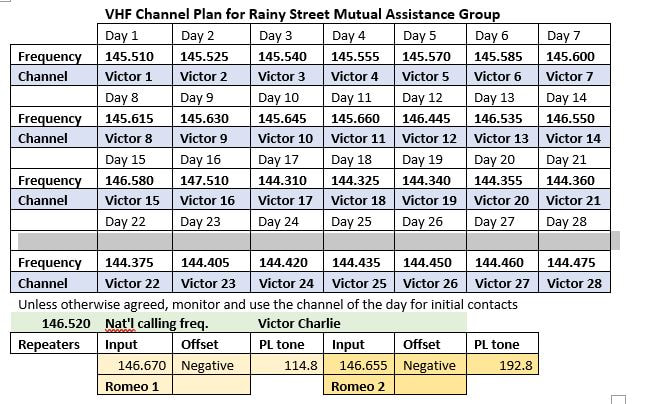
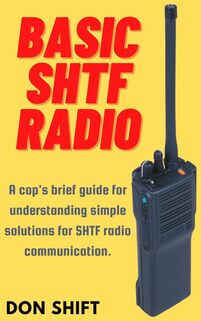
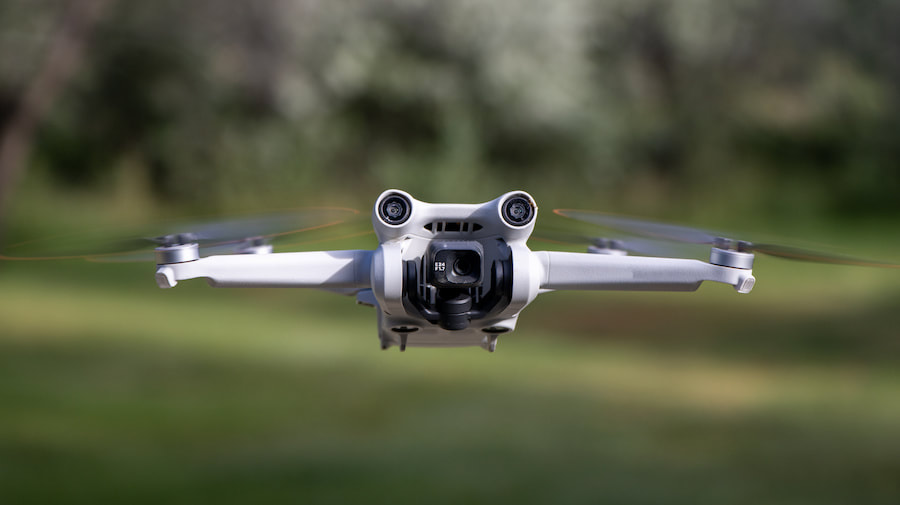
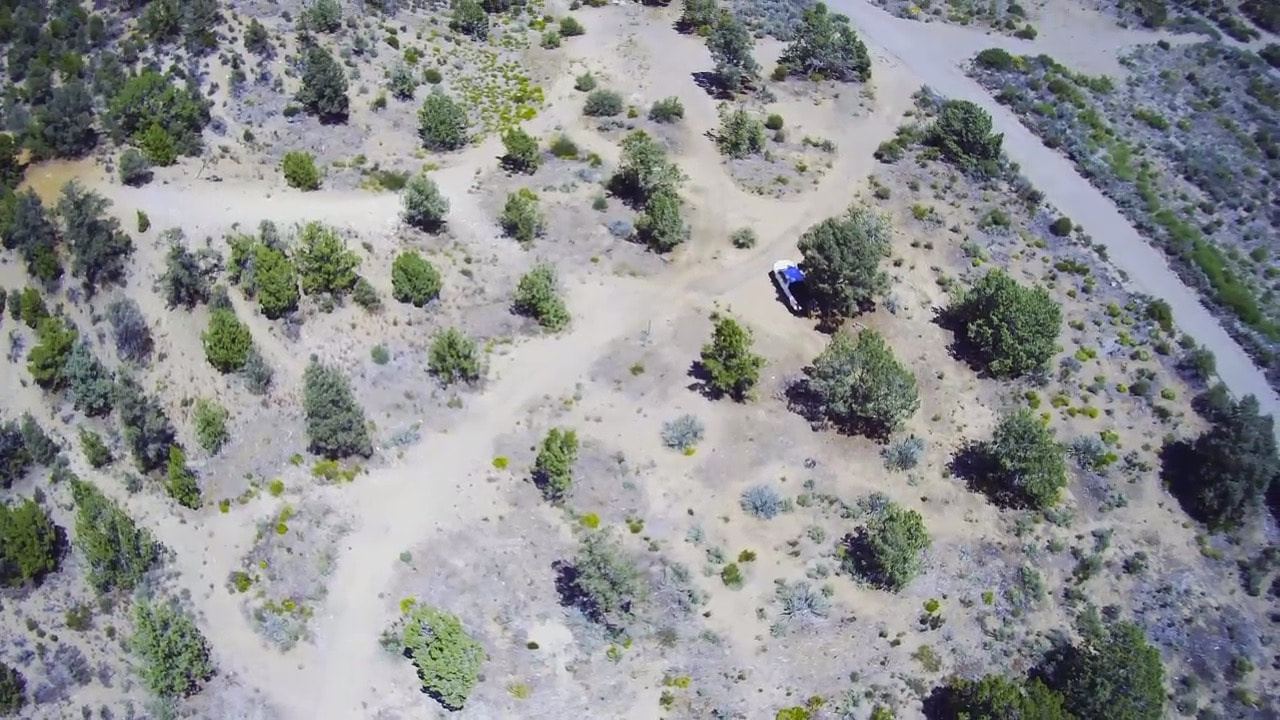
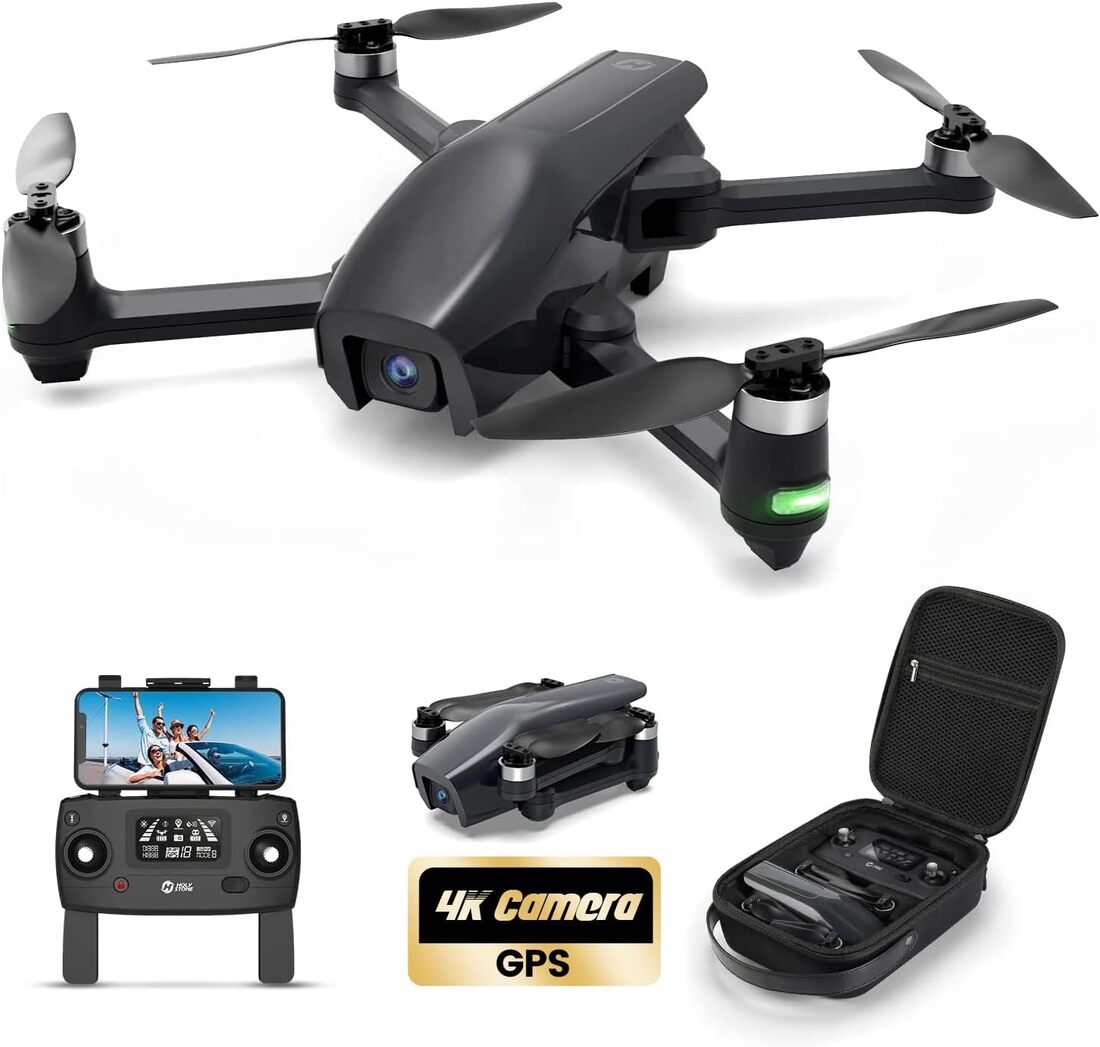
 RSS Feed
RSS Feed
